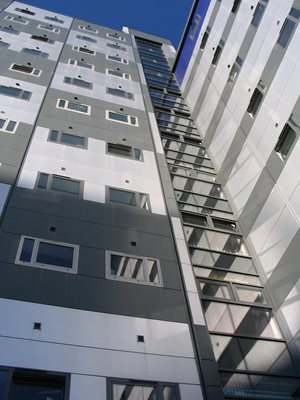The types of accommodation generally available in student markets within university towns are:
Room in an owner's home or lodgings
Shared houses/flats
Taking the student population as a whole, this is the preferred option for the overwhelming majority. The usual deal is that you rent a room in a house and share the kitchen, lounge (if there is one), bathroom and toilet with other students.
The amenities are shared between the occupants. The vast majority of students will sign an Assured Shorthold Tenancy Agreement (AST). For more information on contracts please click here
Self-contained flats
A number of students live in small self-contained flats, where none of the facilities are shared. A flat should have its own bathroom, toilet and kitchen. This category will particularly interest small families, couples or those who prefer a quieter lifestyle. Postgraduate students are often attracted to this accommodation type. A self-contained flat may have one or two bedrooms.
Bedsits
Bedsits account for a small percentage of student accommodation. A bedsit is a room which contains some form of self-contained amenity, normally a small kitchen or separate washing facility. Bathrooms and toilets are usually shared with other residents. For students wishing to live on their own, this can be a more economic way of doing so. Again, postgraduate students are a significant feature of this sub-market. Click here for details of the form of contract you’d probably sign for this type of accommodation.
Room in an owner's home or lodgings
This is where you live in a house, normally with the owner. The provision of meals and who you share with varies. House rules and regimes can also vary considerably, so it's best to talk to the resident owner occupier about how the house works and what they would expect of you. Although only a few students live in this kind of accommodation it is especially useful for international students wanting to live in a local household (also a good way to improve language skills), younger students (particularly those under the age of 18) and those who want a short stay. Live-in owners are often very flexible about accepting short lets.
 Large developments
Large developments
A lot of first year students will live in large developments and so will a much smaller percentage of returning students. These are privately owned, single developments that house 25 students or more. They're often divided into flats for four to six students who have individual bedrooms (some with en-suite). The kitchen, bathroom and living space are shared.
Higher education institutions also provide accommodation in large developments - traditional halls of residence and shared flats in a wider complex. These they provide either themselves or in partnership with a commercial operator.
Average rents compared Leeds, Bradford, Nottingham

